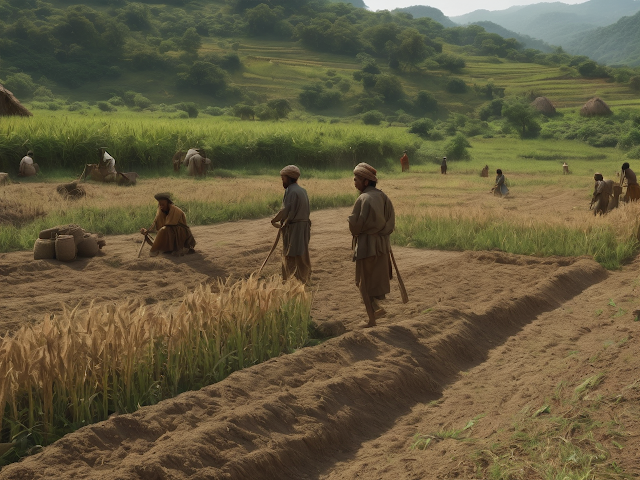AI news: Frozen Fortresses: Siberian Discovery Challenges History's Farming Bias
In a jaw-dropping revelation from the icy depths of Siberia, archaeologists have unearthed the remains of the world's oldest fortresses, turning conventional wisdom on its head. Forget the notion that complex societies only sprouted with the advent of agriculture; these ancient Siberian hunter-gatherers were busy building elaborate defenses 8,000 years ago, showcasing their architectural prowess in a region known more for frost than fortresses.
Nestled along the Amnya River in central Siberia, where winters are as formidable as the challenges facing hunter-gatherer communities, these ancient architects defied expectations. Fishing for abundant pike and salmonids, hunting elk and reindeer with bone and stone-tipped spears, and preserving their bountiful harvests in elaborately decorated pottery—these early Siberians were no strangers to a life of sophistication.
What sets these fortresses apart is not just their architectural brilliance but their shocking timeline. Constructed 2,000 years before the iconic walls of Uruk and Babylon in the Middle East, and thousands of years before agriculture reached certain corners of Europe and Asia, these Siberian strongholds challenge the narrative that permanent settlements and defensive walls were exclusive products of the agricultural revolution.
The fortified settlements, meticulously designed with earthen walls several meters high and wooden palisades, were more than just a cold-climate survival tactic. They were symbols of competition and a testament to the thriving communities that depended on the rich resources of the taiga. As the Siberian environment offered seasonal abundance, from fish runs to migrating herds, these hunter-gatherers harnessed nature's bounty without the need to cultivate crops.
Pottery, once considered an exclusive feature of agricultural societies, also made a surprising appearance in the hunter-gatherer toolkit. Decorated clay pots found at the Amnya site challenge the notion that certain cultural traits were reserved for farming communities. "Pottery and forts are like an alternative Neolithic package," remarks co-author Henny Piezonka of Free University of Berlin, adding a new layer to our understanding of early human ingenuity.
The Siberian revelation echoes a broader shift in archaeological thinking, challenging the linear progression from foraging to farming to complex societies. The monumental structures of Göbekli Tepe in Anatolia, built by people transitioning to agriculture, and the complex, hierarchical societies along the northwest coast of North America, sustained by hunting, gathering, and fishing, paint a diverse picture of human development.
As these frozen fortresses emerge from the depths of time, archaeologists are rewriting the narrative, revealing that complexity in human societies had alternate pathways. The Siberian discoveries, coupled with a global reevaluation of archaeological evidence, remind us that innovation, rivalry, and the quest for resources are timeless elements embedded in the human story. So, the next time you picture ancient civilizations, remember the Siberian strongholds standing proudly against the winds of time, challenging our preconceived notions with each frozen brick.

